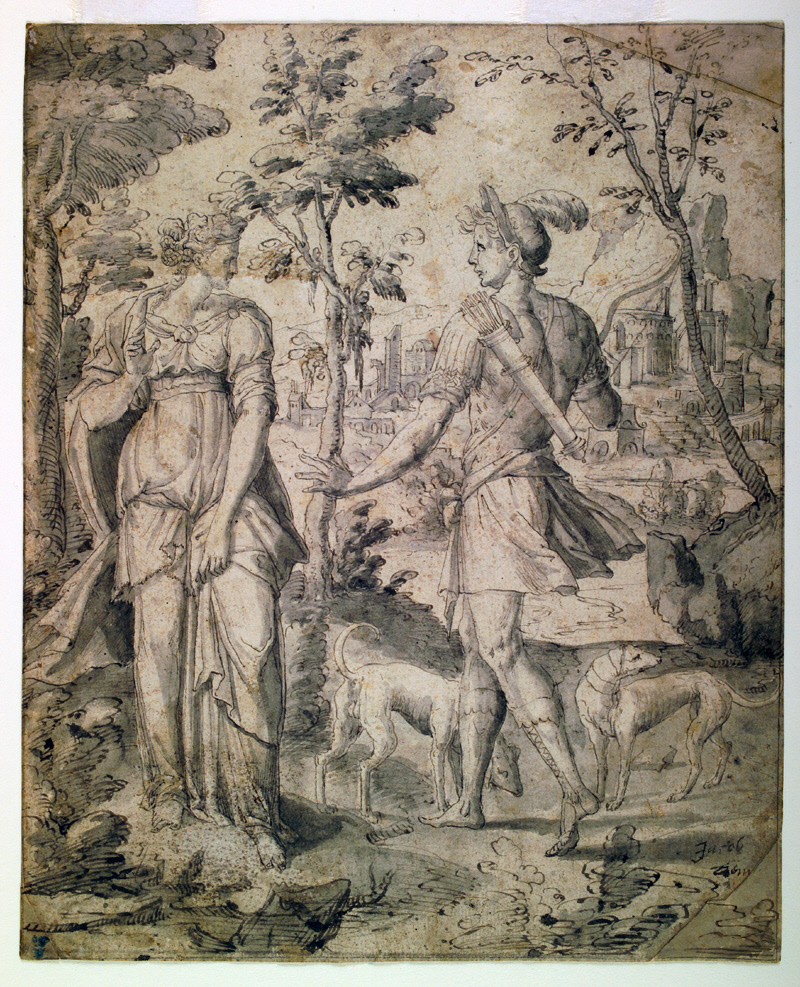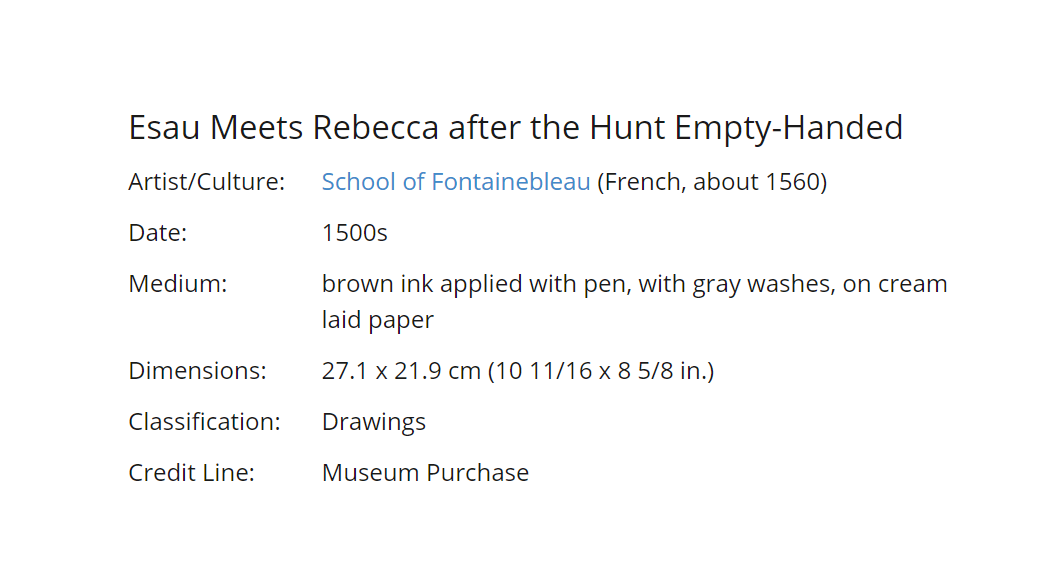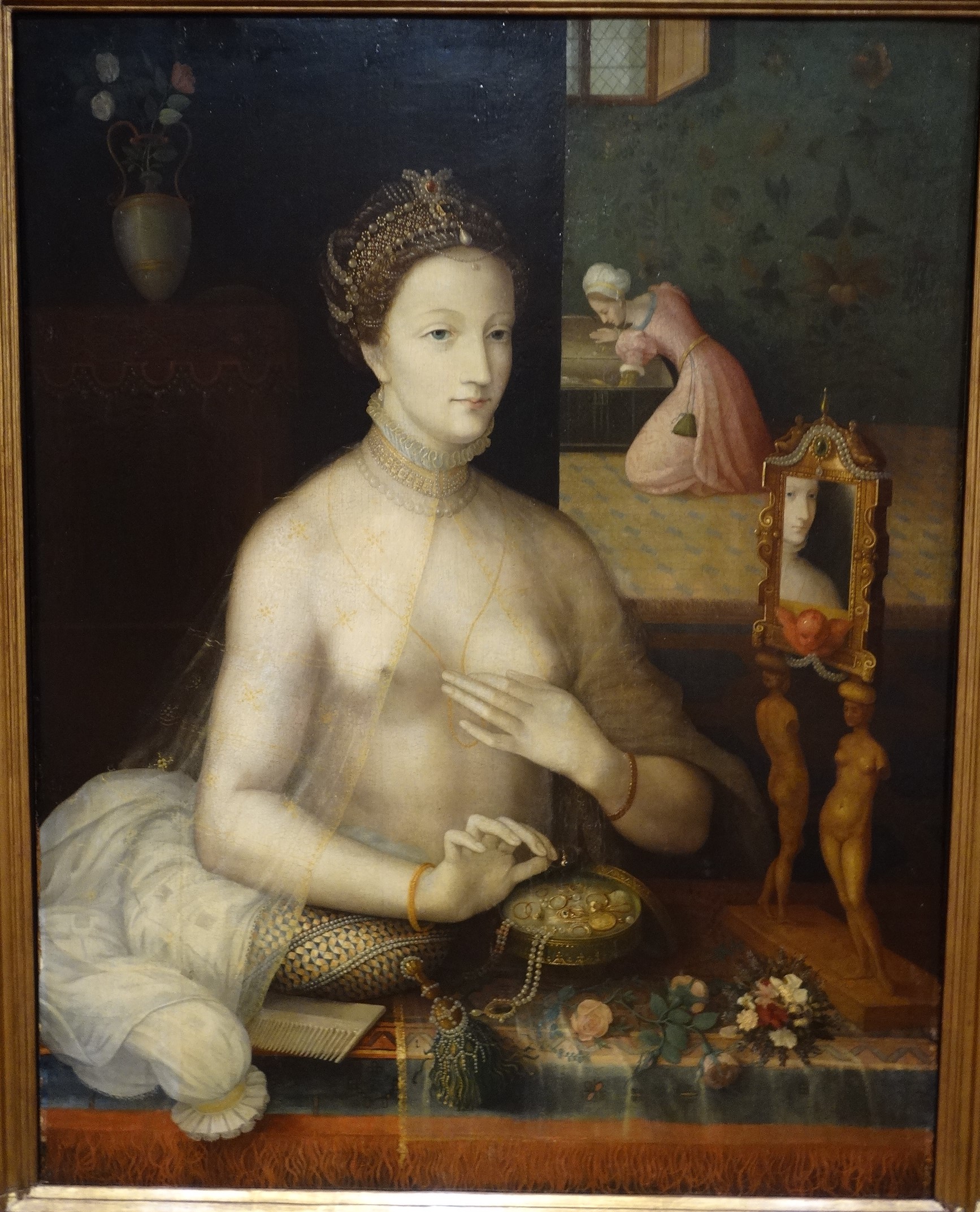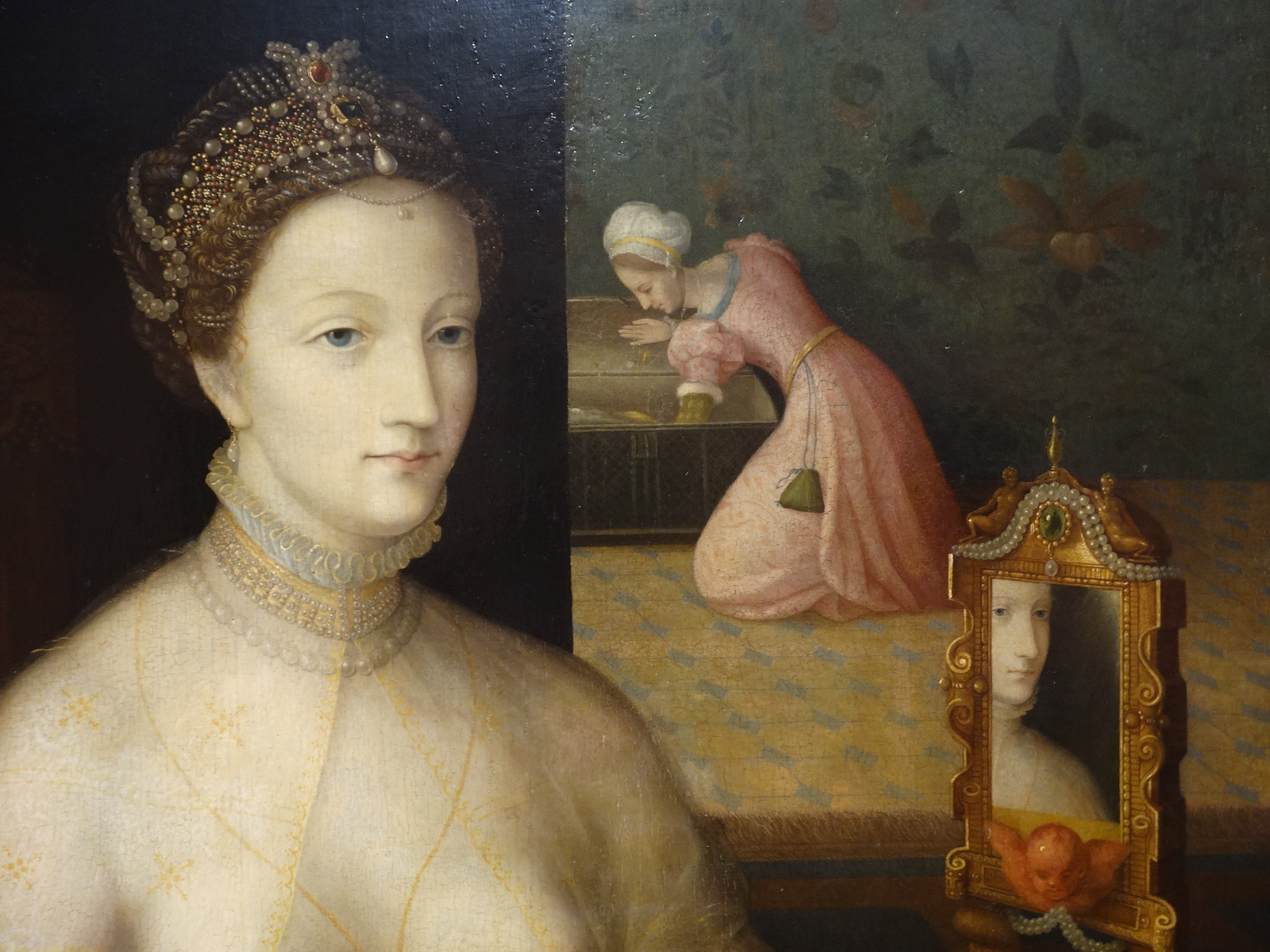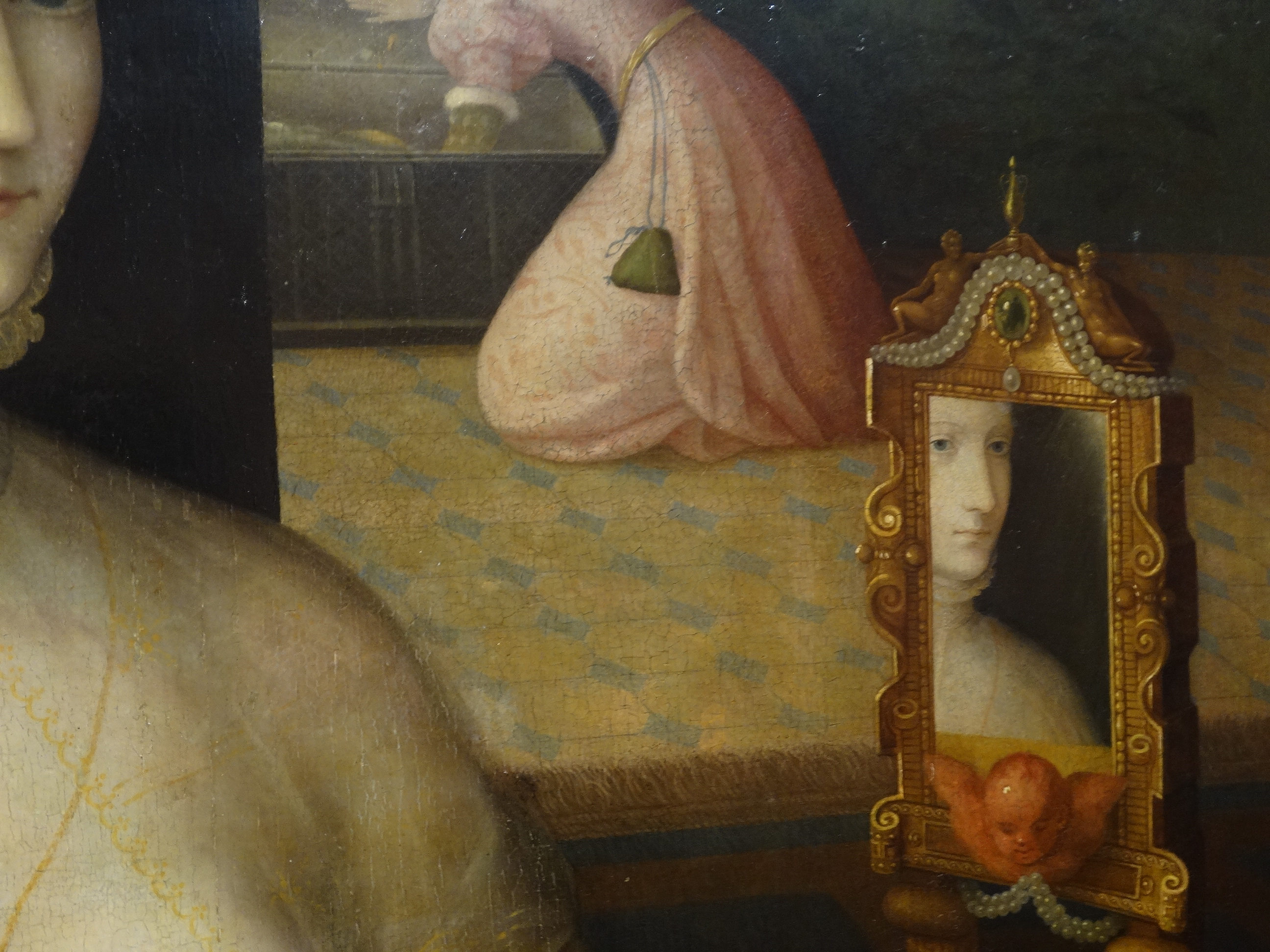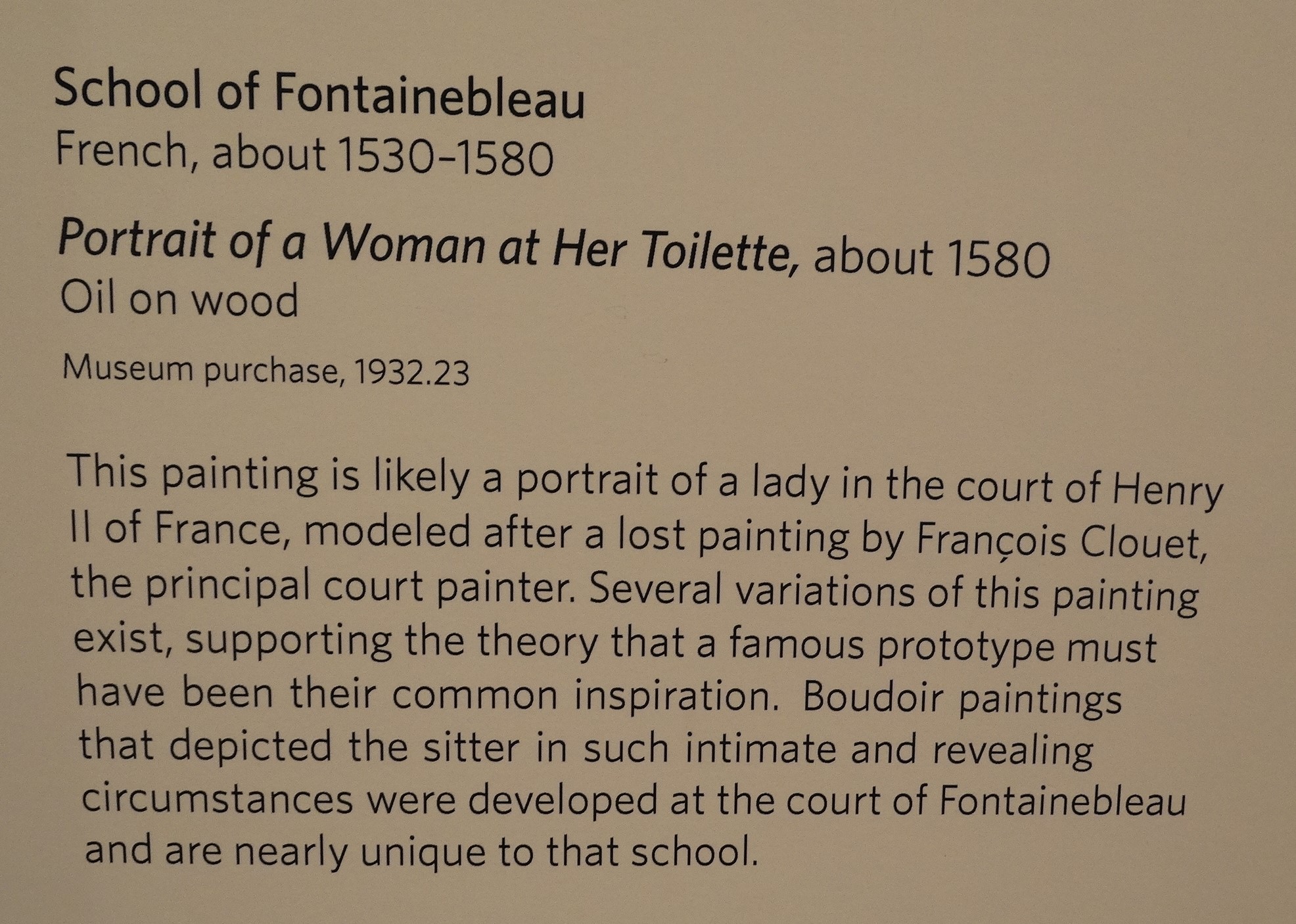School of Fontainebleau (c. 1530 – c. 1610),
refers to two periods of artistic production in France during the late Renaissance centered on the royal Palace of Fontainebleau that were crucial in forming the Northern Mannerism. In 1531, the Florentine artist Rosso Fiorentino, having lost most of his possessions at the Sack of Rome in 1527, was invited by François I to come to France, where he began an extensive decorative program for the Château de Fontainebleau. In 1532 he was joined by another Italian artist, Francesco Primaticcio (from Bologna). Rosso died in France in 1540. On the advice of Primaticcio, Niccolò dell'Abbate (from Modena) was invited to France in 1552 by François's son Henri II. Although known for their work at Fontainebleau, these artists were also invited to create works of art for other noble families of the period and were much esteemed and well-paid.
The works of this "first school of Fontainebleau" are characterized by the extensive use of stucco (moldings and picture frames) and frescos, and an elaborate (and often mysterious) system of allegories and mythological iconography. Renaissance decorative motifs such as grotesques, strapwork and putti are common, as well as a certain degree of eroticism. The figures are elegant and show the influence of the techniques of the Italian Mannerism of Michelangelo, Raphael and especially Parmigianino. Primaticcio was also directed to make copies of antique Roman statues for the king, thus spreading the influence of classical statuary. The mannerist style of the Fontainebleau school influenced French artists (with whom the Italians worked) such as the painter Jean Cousin the Elder, the sculptors Jean Goujon and Germain Pilon, and, to a lesser degree, the painter and portraitist François Clouet the son of Jean Clouet.
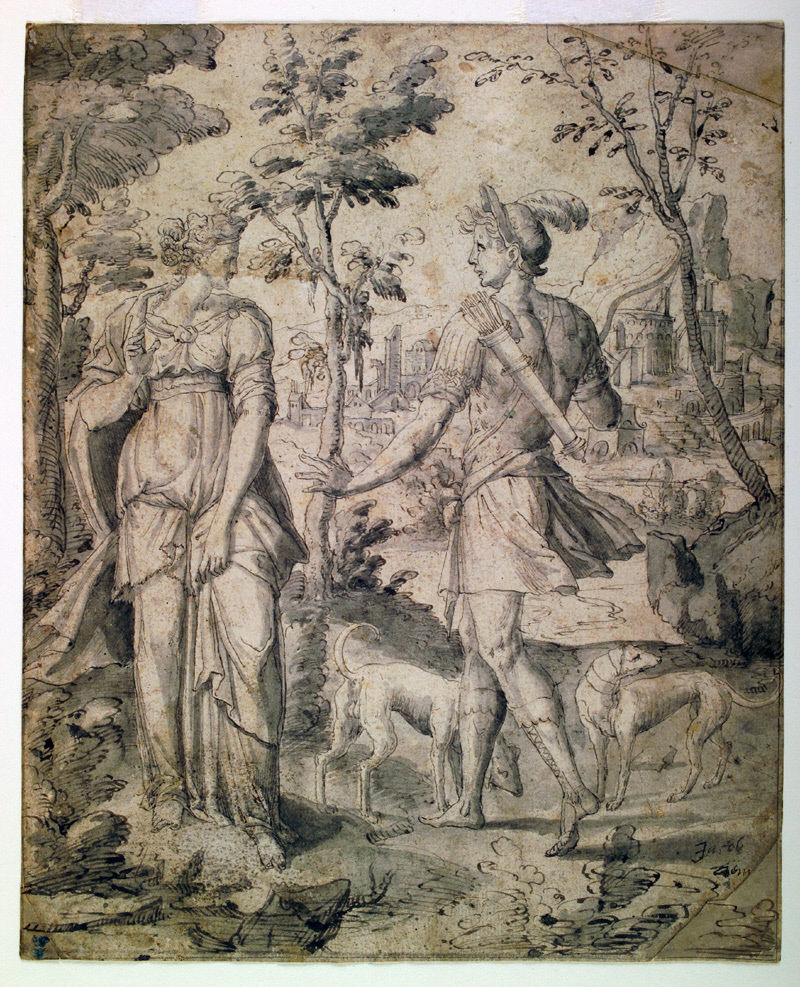 School of Fontainebleau - Esau Meets Rebecca after the Hunt Empty-Handed (1500s)
School of Fontainebleau - Esau Meets Rebecca after the Hunt Empty-Handed (1500s) Original, Worcester Art Museum, MA. Visited in 2020.
Original, Worcester Art Museum, MA. Visited in 2020. School of Fontainebleau - Woman at Her Toilette (1550–1570)
School of Fontainebleau - Woman at Her Toilette (1550–1570)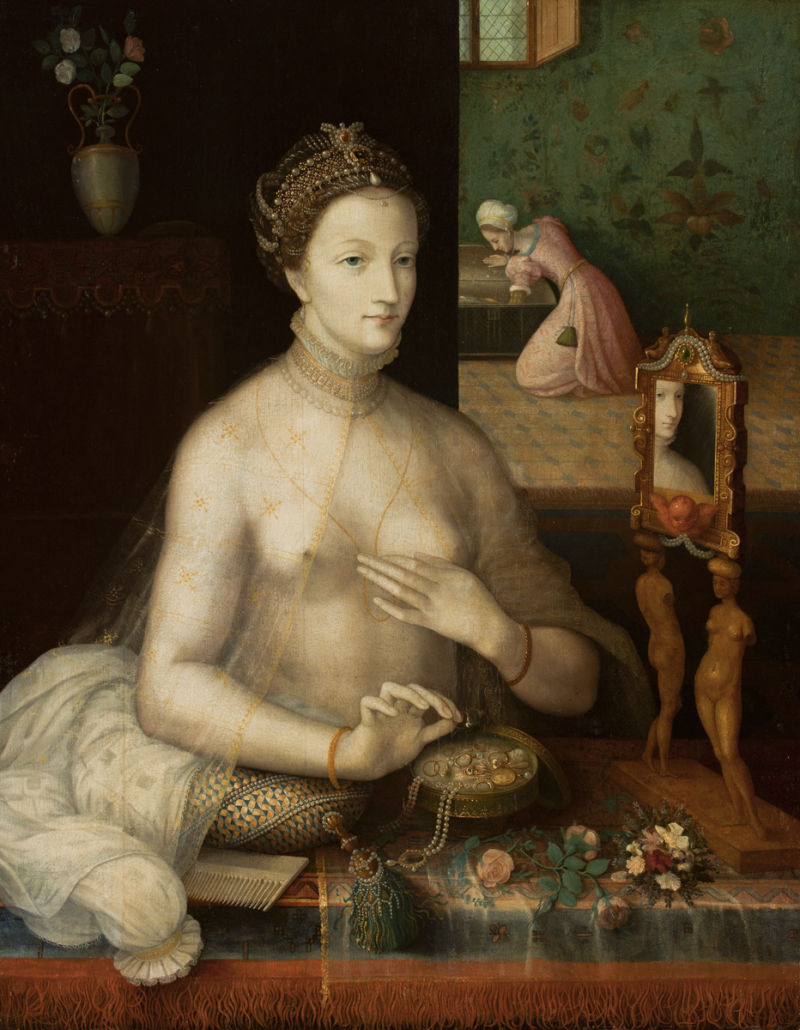 Original, Worcester Art Museum, MA. Visited in 2020.
Original, Worcester Art Museum, MA. Visited in 2020.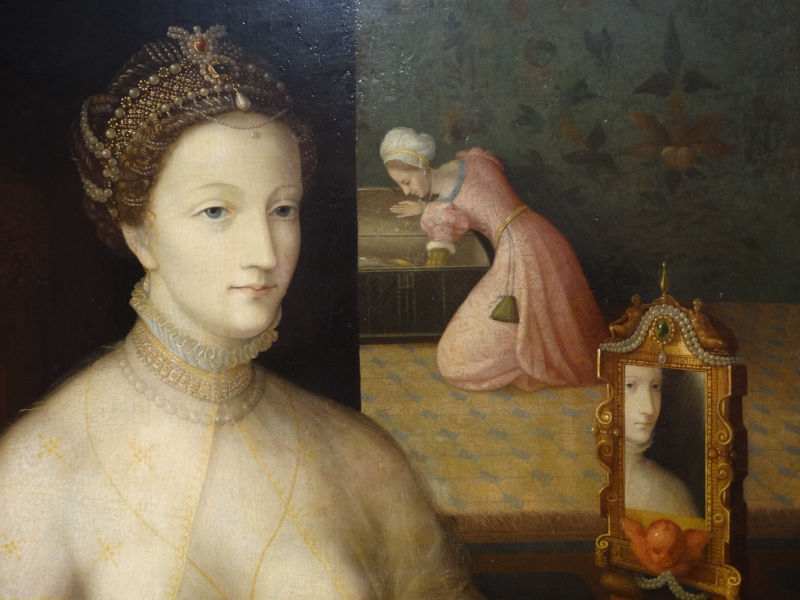 School of Fontainebleau - Woman at Her Toilette (1550–1570)
School of Fontainebleau - Woman at Her Toilette (1550–1570)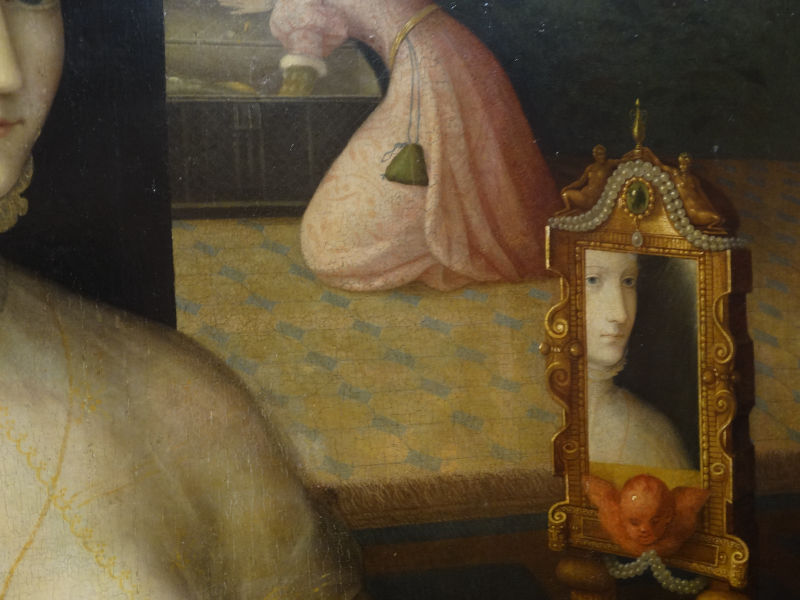 School of Fontainebleau - Woman at Her Toilette (1550–1570)
School of Fontainebleau - Woman at Her Toilette (1550–1570)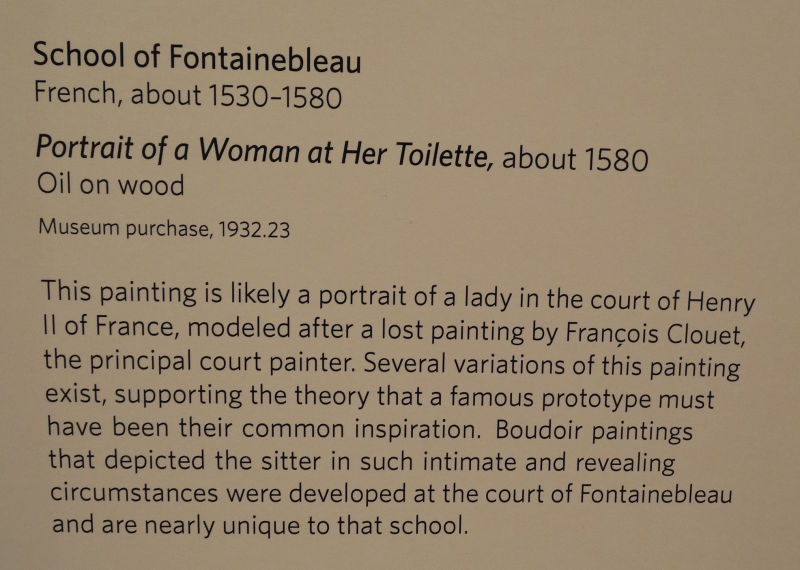 School of Fontainebleau - Woman at Her Toilette (1550–1570)
School of Fontainebleau - Woman at Her Toilette (1550–1570)